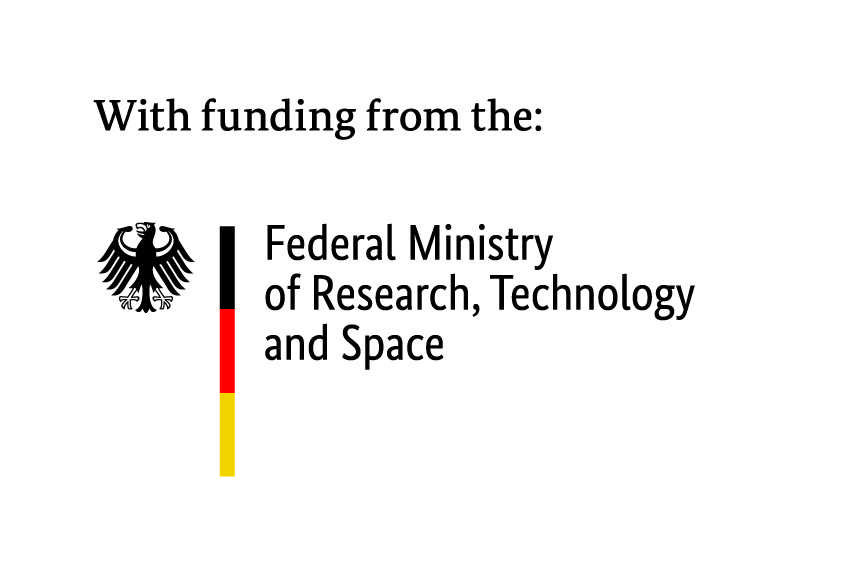Welcome to the AGELESS Project website!
The AGELESS Project (Leveraging long-term planktonic diversity data to develop a framework to assess and protect biodiversity in areas beyond national jurisdiction) is a groundbreaking initiative aimed at addressing the ongoing marine biodiversity crisis. Running from September 1, 2024, to August 31, 2027, this project brings together a team of experts from research institutions, including the University of Bremen (UHB), Carl von Ossietzky University of Oldenburg (UOL), Friedrich-Alexander University Erlangen-Nuremberg (FAU), and the Helmholtz Institute for Functional Marine Biodiversity (HIFMB).
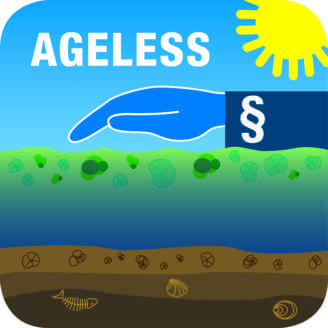
Our Mission
To make informed policy decisions regarding marine biodiversity, it is crucial to understand the pre-anthropogenic baseline. Current direct observations are limited in duration, making it challenging to grasp essential aspects such as natural variability and long-term recovery dynamics. This is where the geological record becomes invaluable, providing insights into historical biodiversity changes and responses to climate change over relevant timescales.
What We Aim to Achieve
The AGELESS Project aims to:
- Integrate fossil records with modern ecological research to assess long-term biodiversity dynamics.
- Develop models that predict how marine communities will respond to anthropogenic climate change.
- Establish effective governance frameworks for biodiversity conservation beyond national jurisdictions.
- Co-produced management recommendations together with stakeholders for biodiversity beyond national jurisdiction.
Our Approach
Through an transdisciplinary framework combining palaeoclimate, palaeoecology, theoretical ecology, and governance research, we will co-design assessment evaluations with stakeholders. This collaborative effort will ensure that our findings are not only scientifically robust but also practically applicable in policy-making.
Engaging Stakeholders
From the outset, we will engage with German and international stakeholders to create dialogue formats that facilitate the assessment and management of marine biodiversity in the areas beyond national jurisdiction. By incorporating insights from the geological record, we aim to establish a natural baseline that informs conservation strategies.
Join us on this journey as we explore the past to safeguard the future of marine biodiversity! For more information about our research activities, team members, and latest news, navigate through the tabs below.
For inquiries or further details, please contact our stakeholder coordinator:
Jan-Claas Dajka
- Email: jan-claas.dajka@hifmb.de
- Phone: +49 (471) 4831-2563
Thank you for visiting the AGELESS Project website!
About AGELESS
The AGELESS Project aims to leverage long-term planktonic diversity data to develop a comprehensive framework for assessing and protecting biodiversity in areas beyond national jurisdiction. With a project duration from September 1, 2024, to August 31, 2027, our interdisciplinary team will integrate insights from palaeoclimate, palaeoecology, theoretical ecology, and governance research. This approach will enable us to create scientifically informed models that can predict the responses of marine biodiversity to climate change over relevant timescales.
Co-Design and Co-Evaluation of Past-Informed Biodiversity Assessments
PI: Ute Jacob and Helmut Hillebrand (HIFMB)
Work Package 1 lays the foundation for the transdisciplinary nature of the AGELESS Project and other initiatives within the BMBF call for proposals on marine biodiversity (referred to as the BBO cluster). WP1 establishes dialogue formats with international and German stakeholders to facilitate the assessment and management of marine biodiversity, enabling collaborative development of key research questions. Notably, stakeholder dialogues will occur across all four projects within the BBO cluster.
Key Tasks in WP1
1. Systematic Stakeholder Analysis
– Conduct a comprehensive analysis of stakeholders involved in marine biodiversity governance.
– Gather insights through surveys and workshops to identify their needs, concerns, and expectations regarding biodiversity assessments.
2. Workshops and Dialogue Forums
– Organize workshops and dialogue forums that bring together stakeholders from various sectors of the BBO-Cluster.
– Facilitate discussions that promote co-design of biodiversity assessments and management strategies.
3. Co-Production of Protected Area Recommendations
– Collaborate with stakeholders to develop recommendations for marine protected areas (MPAs).
– Ensure that these recommendations are informed by both scientific data and stakeholder input.
4. Communication
– Develop a communication strategy to disseminate findings and engage stakeholders effectively.
– Utilize various platforms to share knowledge and foster ongoing dialogue about marine biodiversity conservation.
Objectives
The primary objectives of WP1 include:
– Establishing Collaborative Frameworks: Create structured dialogues that facilitate collaboration among scientists, policymakers, and stakeholders in marine biodiversity governance for the BBO-cluster.
– Enhancing Stakeholder Engagement: Ensure that diverse perspectives are considered in the development of biodiversity assessments, leading to more effective management strategies.
– Integrating Scientific Insights: Leverage scientific knowledge about historical biodiversity changes to inform current conservation practices and policy decisions.
By achieving these objectives, WP1 aims to foster an inclusive approach to biodiversity assessment that not only respects scientific rigor but also incorporates the values and insights of various stakeholders. This collaborative effort is essential for developing effective policies that address the complex challenges facing marine ecosystems today.
Reflexive Governance of marine biodiversity
PI: Bernd Siebenhüner (UOL)
In WP2, we will perform a systematic literature review to gather existing knowledge on marine biodiversity and climate change. This review will inform our recommendations for effective protection strategies and help identify gaps in current research that need to be addressed.
Interface Between Science and Policy
Work Package 2 focuses on the critical interface between science and policy, which is essential for transforming knowledge about marine biodiversity (system knowledge) into effective decision-making (transformative knowledge) and achieving collaboratively agreed-upon goals (goal knowledge). This interface must consider the political nature of governance processes and structures, as well as the unique characteristics of marine biodiversity research and ecosystems.
Marine biodiversity research is fraught with uncertainties due to the dynamic, large, and complex ecosystems that change over timescales difficult for humans to comprehend. Consequently, there are limited prospects for easily understandable, long-term relevant guidelines with quantifiable targets (such as the 1.5°C target in climate policy). Therefore, it is crucial to enhance our understanding of both the current state of scientific research on marine biodiversity changes and the formats and processes at the science-policy interface, including key assessment processes of the IPCC and IPBES.
Key Tasks in WP2
1. Literature Review and Expert Survey
– Conduct a literature review and survey experts to explore how the interfaces between science and policy are structured, particularly regarding marine biodiversity.
– Identify challenges for reflexive ocean governance approaches aimed at protecting marine biodiversity.
2. Empirical Research and Participatory Developments
– Carry out empirical research to develop governance approaches and protection concepts for implementing marine biodiversity conservation under the preliminary BBNJ agreement (Biodiversity Beyond National Jurisdiction).
– Focus on sustainable use and preservation of marine biodiversity in areas beyond national jurisdiction.
3. Workshops and Stakeholder Dialogue Forums
– Organize workshops and stakeholder dialogue forums to facilitate discussions among key stakeholders.
– Aim to foster collaboration and co-design effective governance strategies for marine biodiversity protection.
Objectives
The goals of WP2 are centered around:
- Enhancing understanding of how scientific insights can inform policy-making in marine biodiversity conservation.
- Developing practical governance frameworks that address the unique challenges posed by dynamic marine ecosystems.
- Establishing structured dialogues between scientists, policymakers, and stakeholders to ensure that scientific findings are effectively integrated into decision-making processes.
By addressing these objectives, WP2 aims to create actionable pathways for effective governance that can adapt to ongoing changes in marine environments while ensuring sustainable management of marine biodiversity.
Reducing Uncertainty in Observations of Historical Marine Biodiversity
Jan Freund (UOL), Lukas Jonkers & Michal Kucera (UHB)
Work Package 3 focuses on utilizing microplankton remains found in deep-sea sediments to investigate the dynamics of marine biodiversity over timescales that are not accessible through direct observations. Planktonic foraminifera, in particular, have one of the most complete fossil records among microplankton species, making them a valuable group for understanding historical biodiversity changes and aiding the interpretation of other microfossil clades. However, integrating turnover rates estimated from sediment archives with direct observations remains challenging due to issues related to temporal integration, taphonomy, and a lack of data on absolute abundances.
This work package will address these challenges from both theoretical and empirical perspectives and consists of two subprojects (SPs) that will collaborate closely and regularly meet with WP4 to ensure that the insights gained inform the assessment of past turnover rates necessary for developing models in WP4.
Key Tasks in WP3
1. Empirical Reconstruction of Turnover Rates from Sediment Traps and Cores
- Simulate seasonal dynamics of communities over decades, including interannual variability.
- Temporal integration of simulated samples, description of statistical models, and transition to relative abundances.
- Compare taxonomic turnover rates with functional turnover rates.
2. Workshops and Dialogue Forums
- Assess interannual-decadal (functional) biodiversity dynamics in time series from sediment traps to establish connections with sediment archive time series.
- Investigate the transfer of biodiversity dynamics into sediment archives by comparing long time series from sediment traps with well-dated nearby sediment cores.
- Evaluate estimates of species optima based on relative abundances by analyzing absolute abundances from sediment trap time series.
- Co-design and knowledge transfer activities.
Objectives
The primary objectives of WP3 are centered around:
- Enhancing Understanding of Marine Biodiversity Dynamics: By utilizing fossil records, WP3 aims to reconstruct turnover rates and understand how marine biodiversity has responded to environmental changes over geological timescales.
- Bridging Data Gaps: Address the challenges associated with integrating historical data from sediment archives with contemporary observations to provide a clearer picture of biodiversity dynamics.
- Developing Predictive Models: Use insights gained from empirical data to develop models that predict how marine communities will respond to ongoing climate change.
By achieving these objectives, WP3 seeks to reduce uncertainties in our understanding of historical marine biodiversity and provide a robust foundation for future assessments and conservation strategies. This work is crucial for informing effective governance frameworks that can adapt to changing marine ecosystems while ensuring the protection of biodiversity in areas beyond national jurisdiction.
Utilizing the Past to Predict Future Changes in Marine Biodiversity
PI: Wolfgang Kiessling (FAU), Bernd Blasius (UOL), Lukas Jonkers & Michal Kucera (UHB)
Work Package 4 (WP4) aims to leverage extensive datasets of fossil microplankton from the recently established BioDeepTime database to create detailed empirical scenarios regarding the impacts of climate change on shifts in species distributions and the regional and global extinction of plankton species. By integrating these data with modeling efforts, WP4 seeks to define climate-resilient marine protected areas (MPAs) that are informed by historical data. This work package is divided into four subprojects (SPs) and will closely collaborate with Work Package 3 (WP3). The findings from WP4 will also contribute to Work Package 1 (WP1), ensuring a cohesive approach across the project.
Key Tasks in WP4
1. Using the Past to Develop and Test Models for Predicting Distribution Changes and Extinction Dynamics
- Mechanistic modeling of plankton community dynamics over time.
- Spatial modeling of area shifts for plankton populations.
- Establish a theoretical foundation for the optimal design of marine protected areas.
2. Diversity Dynamics Over Long Timescales
- Apply statistical models to assess how past patterns can be extrapolated into the future.
- Organize workshops and dialogue forums that bring together stakeholders from various sectors of the BBO-Cluster.
- Facilitate discussions that promote co-design of biodiversity assessments and management strategies.
3. Modeling Paleofood Webs: Extending Plankton Dynamics to the Entire Food Web
- Model paleo-food webs to understand historical interactions.
- Simulate dynamic paleo-food webs and extinction cascades.
- Develop optimal designs for marine protected areas considering various trophic levels.
- Co-design and facilitate knowledge transfer regarding food web dynamics.
4. Assessing Predictability and Reversibility of Species Fluctuations as Signals for Climate Change Adaptation Across Different Timescales and Functional Groups
- Expand the BioDeepTime database with co-registered high-resolution time series of biodiversity changes across different functional plankton groups.
- Investigate the impacts of climate change on marine biodiversity across various timescales and functional groups.
- Evaluate predictability and reversibility of species fluctuations as indicators for adaptation to climate warming.
- Co-design and facilitate knowledge transfer related to these findings.
Objectives
The primary objectives of WP4 include:
- Developing Predictive Models: Utilize fossil records to create mechanistic and spatial models that predict how marine plankton will respond to climate change over both short and long timescales.
- Understanding Extinction Dynamics: Investigate the mechanisms behind plankton extinction to gain insights into expected increases in extinction rates due to climate change.
- Integrating Data Across Trophic Levels: Model interactions within paleo-food webs to understand how changes at the plankton level can affect higher trophic levels, thereby informing MPA design.
By achieving these objectives, WP4 seeks not only to enhance our understanding of historical biodiversity dynamics but also to provide actionable insights for contemporary conservation efforts, including the establishment of climate-resilient marine protected areas that can adapt to future environmental changes while preserving marine biodiversity in areas beyond national jurisdiction.
Project Coordination
PI: Michal Kucera (UHB)
Work Package 5 is responsible for the overall coordination of the AGELESS Project, with MARUM (UHB) serving as the project coordinator. This work package ensures effective management and administration among all project partners, including organizing meetings and facilitating communication. The coordinator (Vivien Winter) acts as a liaison between the scientific partners and the coordination office, ensuring compliance with all relevant regulations and guidelines throughout the project.WP5 will oversee the implementation of data management plans, compile all project results, and facilitate dissemination through internal and external communication channels in collaboration with WP1. WP5 also facilitates dialogue forums together with WP1 and meetings within the BBO cluster to promote stakeholder engagement and knowledge exchange. Additionally, WP5 will monitor project progress and coordinate the submission of required annual and final progress reports, utilizing templates for effective reporting.
The AGELESS Project addresses three critical needs:
1. Understanding Natural Variability: By utilizing geological records, we aim to establish a baseline for natural fluctuations in marine biodiversity, which is essential for assessing the impact of climate change.
2. Developing Practical Policies: Our research will lead to actionable policy recommendations that incorporate scientific insights into governance processes for marine biodiversity conservation.
3. Facilitating Knowledge Transfer: We will create platforms for dialogue between scientists and policymakers, ensuring that historical data informs current decision-making processes regarding marine ecosystems.
Through these efforts, the AGELESS Project seeks not only to advance scientific understanding but also to contribute meaningfully to the development of effective policies aimed at protecting marine biodiversity in an era of rapid environmental change.
- List of scientific papers, articles, and reports produced by the project.
- Links to download or access publications
- Overview of data sources and potential additional fieldwork planned during the project.
- Information on locations, methodologies, and expected outcomes.
- Description of outreach initiatives aimed at engaging stakeholders and the public.
- Events, workshops, and educational materials related to marine biodiversity.
Meet Our Team

Sina Berends
Hi, I’m Sina, a researcher with the Ecological Economics Group at the University of Oldenburg. In AGELESS, I contribute to WP2, which focuses on reflexive governance for marine biodiversity. My role involves developing and recommending effective governance instruments that can protect marine biodiversity.
Here you find Sina Berends` website at the University of Oldenburg

Bernd Blasius
I am a physicist working at the theoretical description of complex living systems at the interface of theoretical ecology and applied mathematics. Using modern tools from statistical physics, complex networks, dynamical systems theory and data science, my aim is to obtain fundamental insights into the organization of living systems, but I am also concerned with the application of such concepts to specific biological systems and tangible applications.
Within AGELESS I coordinate project WP 4.3. which aims to establish spatially explicit, size-structured models of paleo food-webs to investigate how climate change has impacted marine species across different trophic levels, from microplankton to megafauna.
Here you find Bernd Blasius’s website.
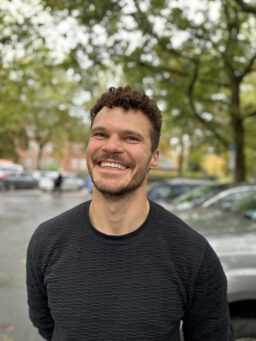
Jan-Claas Dajka
Hi, I’m Jan – a postdoctoral researcher of HIFMB’s Transfer Office working on marine biodiversity at the science-policy interface. I like to work transdisciplinarily with people from multiple fields so that we can improve marine biodiversity management and policy together. In AGELESS, I work on WP1 and am responsible for the co-design aspects.

Jan Freund
As a theoretical physicist by training, I am interested in modeling the dynamics of natural systems at different temporal and spatial scales, including stochastic aspects. In the AGELESS project, very different time scales come into play, especially in the reconstruction of turnover rates from recorded time series measurements, and require a reliable knowledge of the uncertainties arising from different sources. The results of sub-project WP3.1 should help to make valid statements about recent changes in biotic communities and biodiversity.
Here you find Jan Freund´s website at the University of Oldenburg.

Thorsten Grothmann
I’m Torsten – a senior researcher in the Ecological Economics Group at the University of Oldenburg. In my research, I am particularly interested in participation and communication processes in sustainability science and governance and how they can be improved. In AGELESS, I work mainly on WP2 and am responsible for the analysis of science-policy interfaces for biodiversity governance.
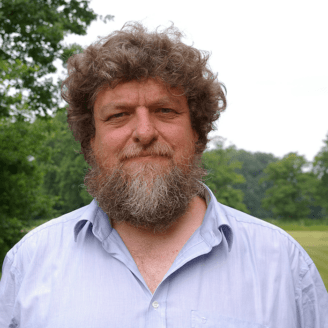
Helmut Hillebrand
I am generally very interested in the mechanisms that constrain and alter biodiversity in a variety of ecosystems. I like to think about the complex nature of biodiversity change and ecological stability. Trained as an experimental ecologist, I have focused more on research syntheses and data analyses in recent years.
Here you find Helmut Hillebrand´s website at the University of Oldenburg

Lukas Jonkers
Lukas is a micropalaeontologist working at MARUM | Bremen University. He has been working on modern and fossil marine plankton (planktonic foraminifera) to reconstruct the state of the past ocean. Recently, he has been discovering that the rich record of fossil plankton can also be used to learn about the long-term dynamics of marine biodiversity. Lukas co-coordinates AGELESS together with Michal Kucera and supervises Tonke Strack (WP3.1) and Carl Reddin (WP4.4).
Here you find Lukas Jonkers’ website at MARUM

Taranjot Kaur
I work at the interface of mathematics and ecology employing network theory and dynamical systems approaches. My work spans complex networks ranging from plant-pollinator networks, marine food webs, population biology models, etc., emphasizing the mechanisms shaping biodiversity outcomes and systems’ stability under environmental stress. I am passionate about data-theory integration to improve predictions of ecosystem responses to global change and support conservation strategies.
Institutional webpage: https://uol.de/icbm
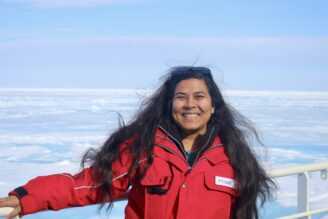
Tasnuva Ming Khan
My name is Ming and I am a postdoctoral researcher based at FAU, working with Prof. Dr. Wolfgang Kiessling and Dr. Marina Rillo under WP 4.1. I am broadly interested in the spatial (and temporal) scale dependent drivers of ecological structure in marine communities, both in the modern oceans and in the fossil record. Within the AGELESS project I am studying the asymmetric range shifts of planktonic foraminifera, using the ForCenS and ForCenS-LGM databases.

Wolfgang Kießling
I am trained as a paleontologist targeting ecological and evolutionary processes on large spatial scales and at time scales of millions of years. Focusing on patterns in deep time, I aim to derive general principles of the interplay between earth system change and biodiversity dynamics in marine ecosystems. This research is supplemented by analyses of modern data and through collaboration with marine ecologists and physiologists. I develop and utilize large paleobiological and biological datasets to allow for a comprehensive analysis of biodiversity patterns.
I coordinate WP 4.1 and 4.2 from FAU Erlangen-Nürnberg.
Here you find Wolfgang Kießling’s website at GeoZentrum Nordbayern

Michal Kucera
I am a paleontologist fascinated by the potential of the marine microfossil record as an archive of past climate change and biological evolution. To make the most of this potential, my research combines studies of genetic diversity and ecology of modern marine species and communities with investigations of their evolution and ecology in the geological past. The huge abundance of microfossils in marine sediments is ideal ground for quantitative analyses and accordingly much of my career has revolved around data syntheses and stewardship of large datasets. Together with Lukas Jonkers, I coordinate the AGELESS consortium (WP5) and supervise Tonke Strack (WP3.1) and Carl Reddin (WP4.4).
Here you can find Michal Kucera’s website at MARUM, University of Bremen.

Lukas Meysick
I’m a postdoctoral researcher within the Complex Systems group at the ICBM, University of Oldenburg. While my research background centers on coastal ecosystem functioning and species interactions, my current work within the AGELESS project focuses on modeling and quantifying uncertainties in plankton turnover estimates across decadal to evolutionary timescales.
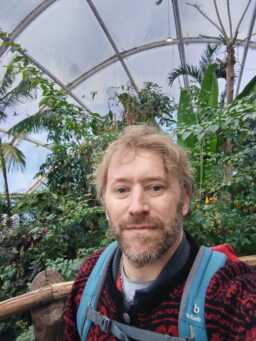
Carl J Reddin
Hi, I’m Carl, a marine ecologist that specialises in modelling the links between climate changes and marine ecological impacts, no matter whether those changes and impacts were last year or decade, to thousands or millions of years ago. My AGELESS contribution (WP4.4) is assessing how predictable the responses of different groups of plankton are to climate change.
You find Carl J Reddin’s websites at ResearchGate (here) and Google Scholar (here)

Isaiah Smith
Isaiah Smith is a PhD student in the AGELESS cluster studying planktonic responses to global change in deep time. Isaiah’s research focuses on how climate perturbations impact the geographic range of microplankton, and how marine species originate and become extinct over million-year time scales. He is based at FAU Erlangen-Nürnberg.
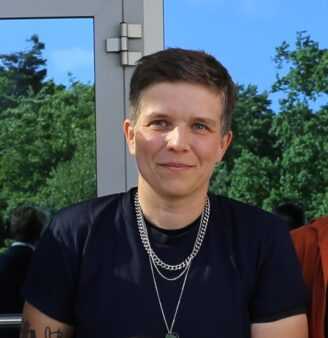
Tonke Strack
Hi, my name is Tonke and I am a postdoctoral researcher in the Micropaleontology-Paleoceanography group at MARUM, University of Bremen. During my PhD, I studied the long-term response of marine plankton biodiversity (mainly planktonic foraminifera) to past climate change. Within AGELESS (WP3.1), I now focus on biodiversity turnover dynamics by analysing planktonic foraminifera from both decadal sediment trap time series and the fossil record.
Here you find the link to Tonke Strack´s MARUM website

Hendrik Wolter
I work as a Postdoc in the Ecological Economics Group at the University of Oldenburg. My research revolves around the resilience of social-ecological systems, particularly regarding aspects of governance. In AGELESS, I mainly support in the stakeholder dialogue forums with my expertise in transdisciplinary research.
Here you find Hendrik Wolter’s website at the University of Oldenburg.
September 12, 2025
The AGELESS team had their second annual meeting on September 12, 2025, at MARUM, University of Bremen. The team discussed their recent scientific findings ranging from marine governance and how to effectively protect marine biodiversity to new insights into the long-term dynamics of marine biodiversity in response to climate change. A large part of the meeting was devoted to preparing for the dialogue forum in Berlin next year, when we will collaborate with our partners from the Biodiversity in the Blue Ocean cluster and our various stakeholders to co-create policies for the effective protection of marine biodiversity in areas outside national jurisdiction.
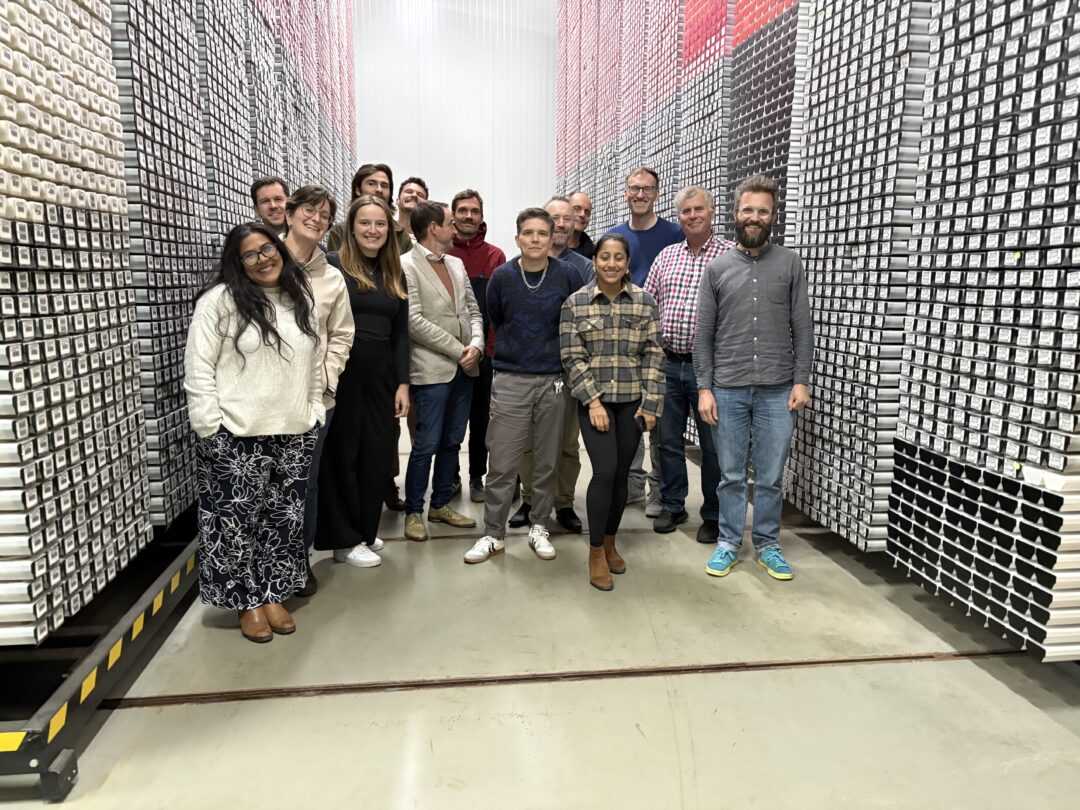
The AGELESS team in the IODP core repository at MARUM. The sediment cores stored in this repository form the archives for the reconstruction of long-term climate and biodiversity dynamics that are at the centre of the AGELESS project.
